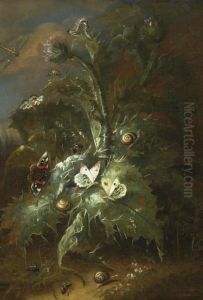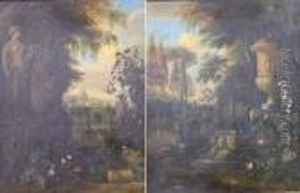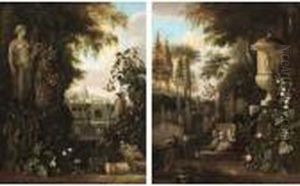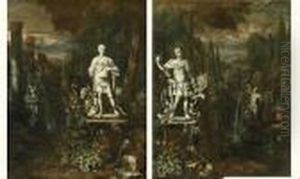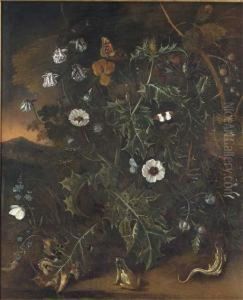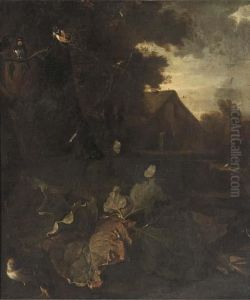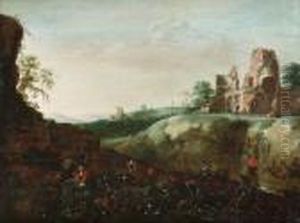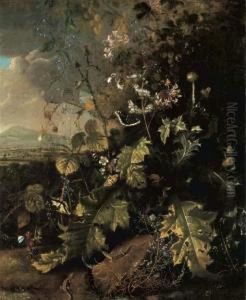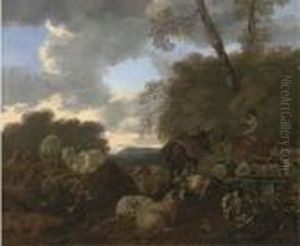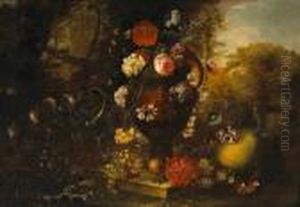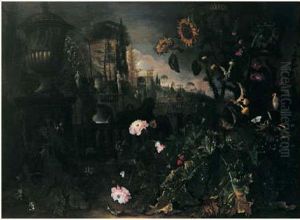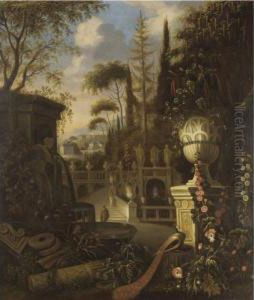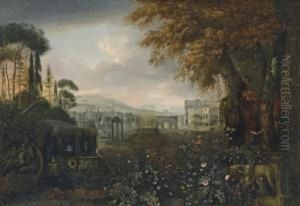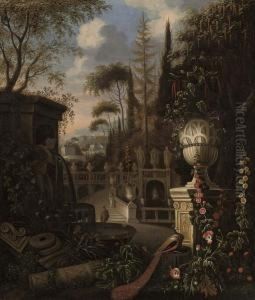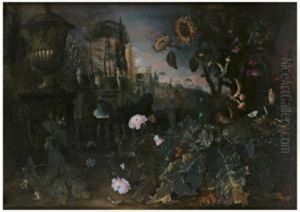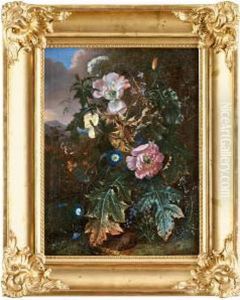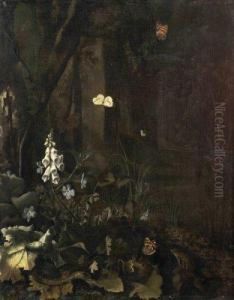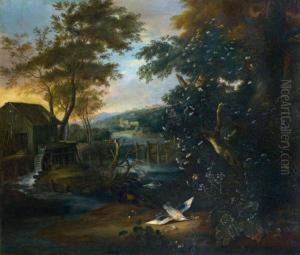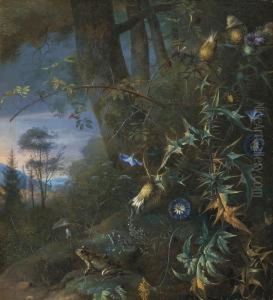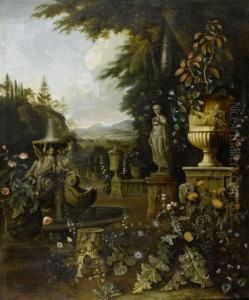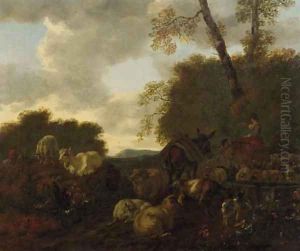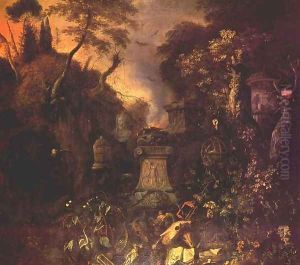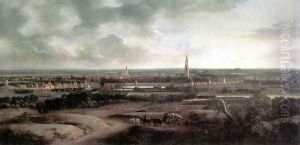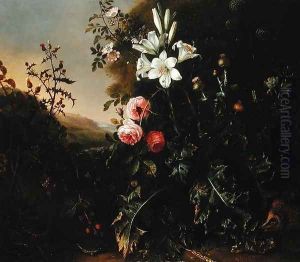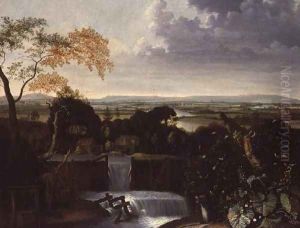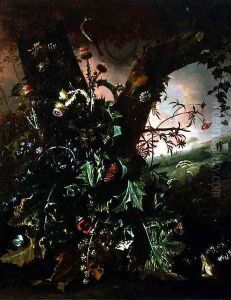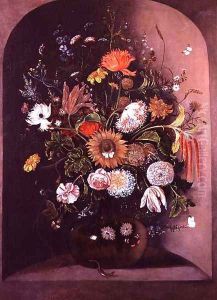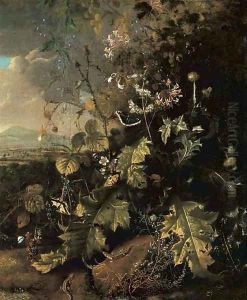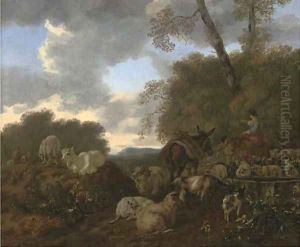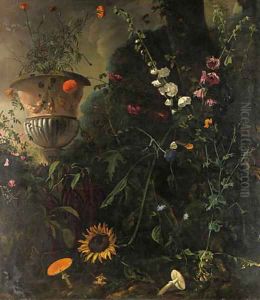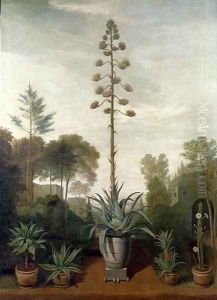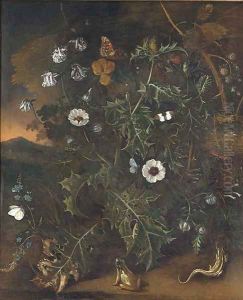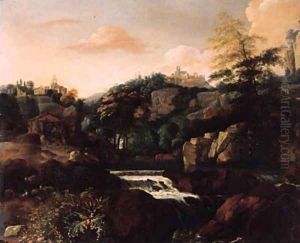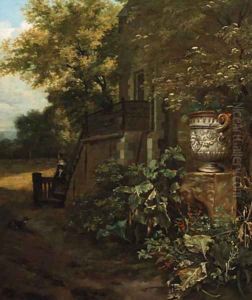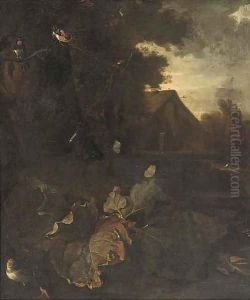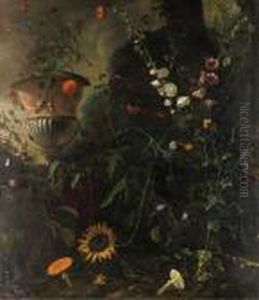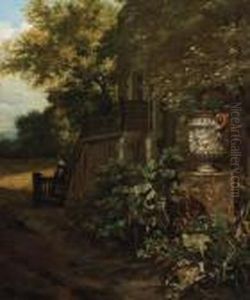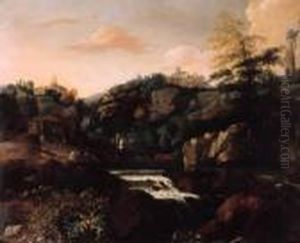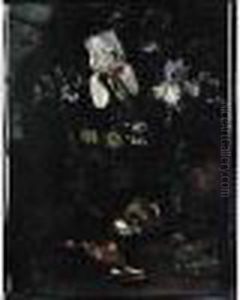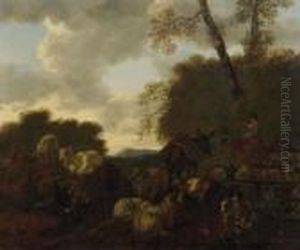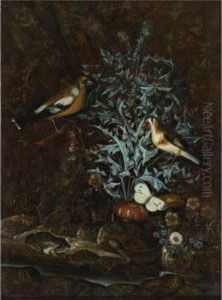Mathias Withoos Paintings
Mathias Withoos was a Dutch Golden Age painter known for his detailed still lifes and landscapes. Born in Amersfoort in 1627, Withoos was initially taught painting by his father who was also an artist. He later became a pupil of Jacob van Campen, and subsequently, of Otto Marseus van Schrieck, who is credited with teaching him the art of painting forest floor still lifes, a genre that Withoos would later become famous for.
Withoos moved to Hoorn after his training, where he became a successful painter, attracting the patronage of local notables. His works often featured a combination of still life and landscape elements, meticulously depicting the natural world with an almost scientific precision. He was particularly skilled at painting undergrowth, insects, and small animals in a dark, forested environment.
In 1672, during the French invasion of the Dutch Republic, Withoos left Hoorn and moved to Rome. There, he joined the Bentvueghels, an association of mostly Dutch and Flemish artists working in Rome, and was given the nickname 'Matthias the Black'. Withoos' time in Italy had a significant impact on his artistic style, as he was exposed to the dramatic light and classical landscapes that would feature in his later works.
After several years in Italy, Withoos returned to the Netherlands and settled in Amsterdam, where he continued his work until his death in 1703. His children, including Alida Withoos, Johannes Withoos, Pieter Withoos, and Frans Withoos, all became painters as well, influenced by their father's style and technique. Mathias Withoos' legacy includes not only his own paintings but also the artistic tradition he passed down to his family and the influence he had on still life and landscape painting in the Dutch Golden Age.
